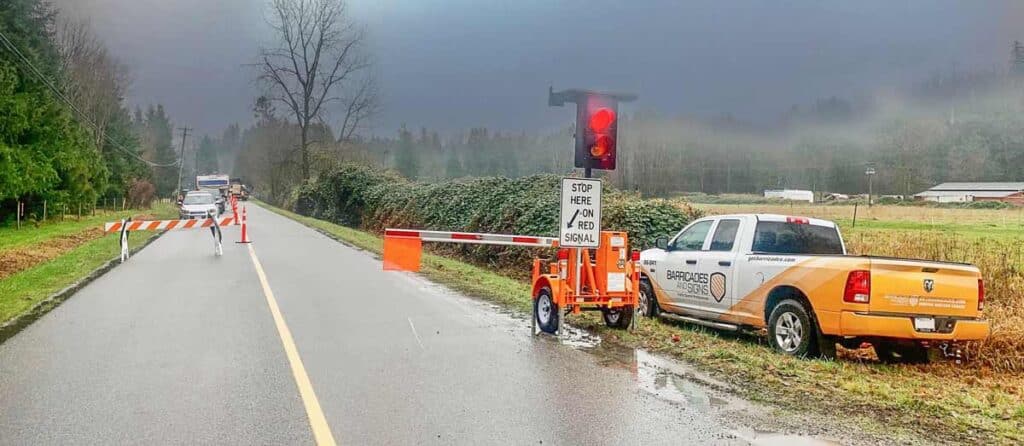The Life-Saving Power of Automatic Flagging Machines

In the world of road construction and maintenance, safety is paramount. Construction crews face numerous daily hazards as they work to improve our roadways. One of the most significant risks is managing traffic through work zones. Traditionally, this task has been handled by human flaggers, but this role comes with its own set of dangers. Enter the automatic flagging machine, a technological innovation that improves efficiency and saves lives.
What is an Automatic Flagging Machine?
An automatic flagging machine, such as the Automated Flagger Assistance Device (AFAD) RCF 2.4, is a portable device used in temporary work applications to control traffic flow. Unlike traditional flagging, where a person stands near traffic flow with a sign, the automatic flagging machine is remotely controlled, reducing the risk to human flaggers.
The AFAD RCF 2.4 is designed for easy transport. Two units can be attached and towed as a single trailer, making it a versatile solution for various work sites. The device is operated by a remote control, which must be handled by a certified flag person. This allows one operator to control two units in a work zone up to 800 feet. Two operators or flaggers are required for larger work zones ranging from 800 feet to 5 miles, each with separate remote controls.
The Stark Reality: Roadside Worker Fatalities
The importance of automatic flagging machines becomes even more evident when we look at the statistics. In British Columbia alone, between 2009 and 2018, 13 roadside workers were killed and 213 were injured due to being hit by a motor vehicle. In 2018, two roadside workers died and 29 others were wounded under similar circumstances. These numbers underscore the significant risks that roadside workers face every day.
Organizations like the RCMP, Work Zone Safety Alliance, and WorkSafeBC have partnered to raise awareness about road workers’ risks through initiatives like the annual Cone Zone campaign to address this issue. The campaign emphasizes the importance of obeying the law when approaching a work zone, slowing down, and paying attention to signage and instructions from traffic control persons.

How Automatic Flagging Machines Save Lives
The primary way that automatic flagging machines save lives is by reducing the risk to human flaggers. Traditionally, flaggers are required to stand near the flow of traffic, which puts them at risk of being struck by a vehicle. With an automatic flagging machine like the AFAD RCF 2.4, the flagger can operate the device remotely, keeping them safe from the traffic.
In addition to protecting the flaggers, automatic flagging machines also enhance the safety of drivers and construction workers. The devices provide clear, consistent signals to drivers, reducing confusion and improving compliance with traffic directions. This leads to smoother traffic flow through the work zone, reducing the risk of accidents.
Furthermore, the use of automatic flagging machines can increase efficiency. With one operator able to control two units, fewer personnel are needed to manage traffic. This allows construction crews to allocate more resources to the actual construction work, improving productivity and reducing the time required to complete the project.
In the realm of road construction and maintenance, the introduction of automatic flagging machines like the AFAD RCF 2.4 represents a significant advancement in safety and efficiency. These devices are genuinely life-saving innovations by reducing the risk to human flaggers and improving traffic management. As technology continues to evolve, we can expect to see even more improvements in the safety and efficiency of our roadways.

